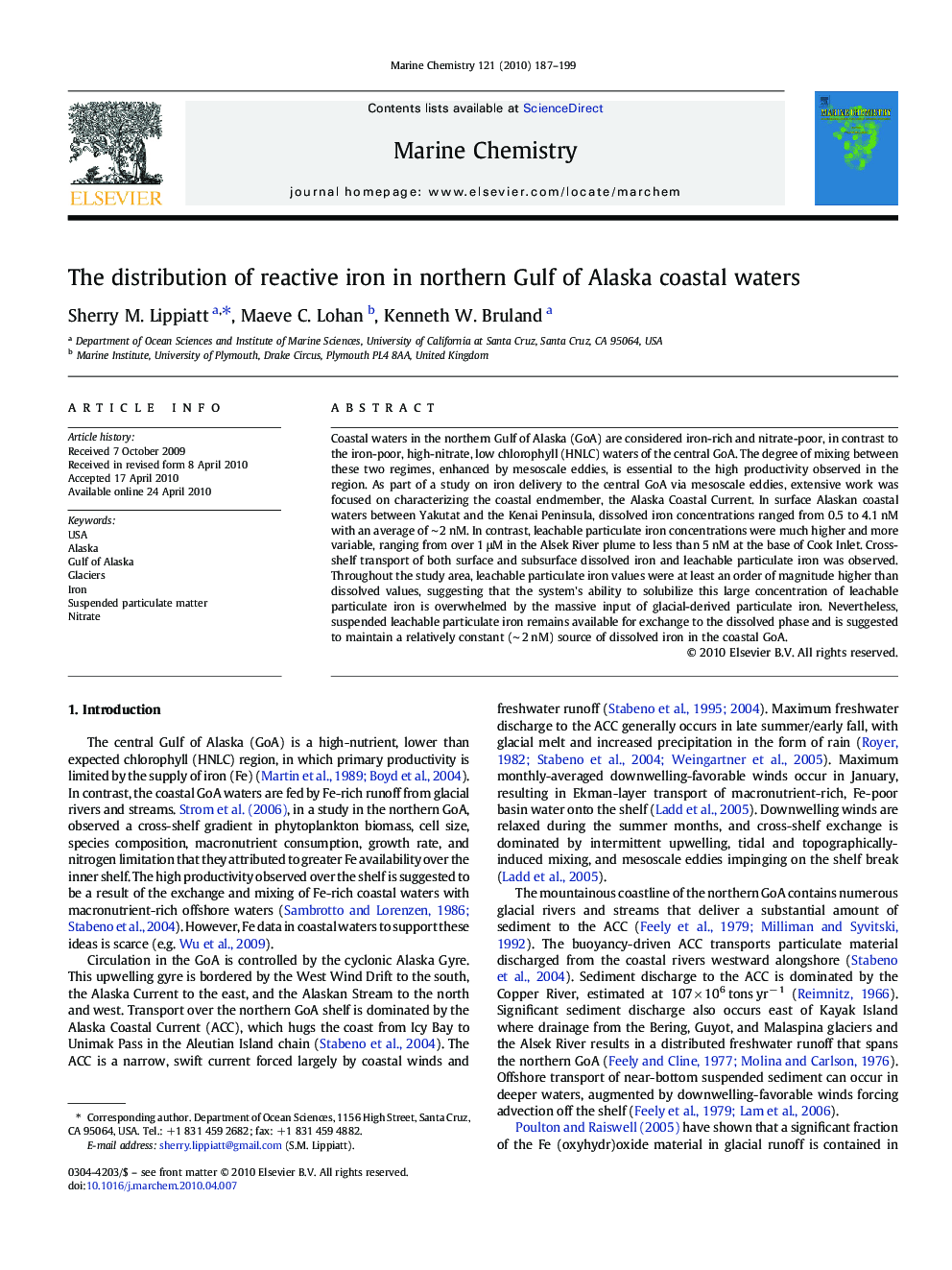| کد مقاله | کد نشریه | سال انتشار | مقاله انگلیسی | نسخه تمام متن |
|---|---|---|---|---|
| 1261739 | 1496703 | 2010 | 13 صفحه PDF | دانلود رایگان |

Coastal waters in the northern Gulf of Alaska (GoA) are considered iron-rich and nitrate-poor, in contrast to the iron-poor, high-nitrate, low chlorophyll (HNLC) waters of the central GoA. The degree of mixing between these two regimes, enhanced by mesoscale eddies, is essential to the high productivity observed in the region. As part of a study on iron delivery to the central GoA via mesoscale eddies, extensive work was focused on characterizing the coastal endmember, the Alaska Coastal Current. In surface Alaskan coastal waters between Yakutat and the Kenai Peninsula, dissolved iron concentrations ranged from 0.5 to 4.1 nM with an average of ∼ 2 nM. In contrast, leachable particulate iron concentrations were much higher and more variable, ranging from over 1 μM in the Alsek River plume to less than 5 nM at the base of Cook Inlet. Cross-shelf transport of both surface and subsurface dissolved iron and leachable particulate iron was observed. Throughout the study area, leachable particulate iron values were at least an order of magnitude higher than dissolved values, suggesting that the system's ability to solubilize this large concentration of leachable particulate iron is overwhelmed by the massive input of glacial-derived particulate iron. Nevertheless, suspended leachable particulate iron remains available for exchange to the dissolved phase and is suggested to maintain a relatively constant (∼ 2 nM) source of dissolved iron in the coastal GoA.
Journal: Marine Chemistry - Volume 121, Issues 1–4, 20 August 2010, Pages 187–199